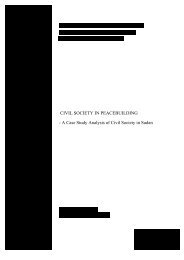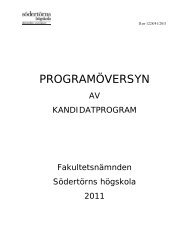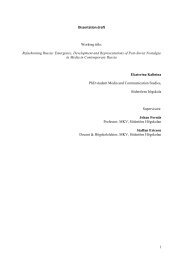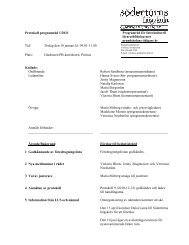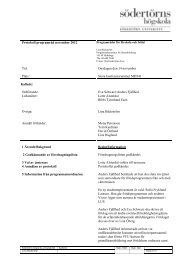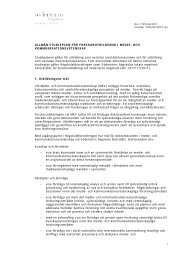Underlying Reasons for the Persistence of Female Genital Mutilation
Underlying Reasons for the Persistence of Female Genital Mutilation
Underlying Reasons for the Persistence of Female Genital Mutilation
Create successful ePaper yourself
Turn your PDF publications into a flip-book with our unique Google optimized e-Paper software.
3.2 Culture and Relativism <br />
3.2.1 Defining Culture <br />
Anthropological research on culture has shown that <strong>the</strong>re are pr<strong>of</strong>ound differences between<br />
western legal <strong>the</strong>ories and cultures and those <strong>of</strong> Africa, Asia, India and Islam. Defining culture is<br />
challenging since <strong>the</strong>re are many definitions available. The most contemporary understandings <strong>of</strong><br />
culture, whatever <strong>the</strong>ir o<strong>the</strong>r <strong>the</strong>oretical differences may be, include <strong>the</strong> following characteristics:<br />
• Culture do not possess “agency to act”; individuals do.<br />
• Cultures are not things, but analytical categories.<br />
• Individuals “carry” multiple cultures simultaneously, including ones rooted in religion,<br />
ethic, racial, or national affiliations; gender, class and occupation or pr<strong>of</strong>ession,<br />
• Cultures are “reproduced” –passed down to individuals- and in this sense one can speak<br />
<strong>of</strong> “tradition”; but cultures are also shaped, emergent, and responsive to environmental<br />
(social and physical) exigencies.<br />
• Cultures are not monolithic, integrated, timeless, and stable wholes but are <strong>of</strong>ten<br />
fragmented, contestable and contested.<br />
• Cultures do not cause conflicts; <strong>the</strong>y are, however, “<strong>the</strong> lenses through which <strong>the</strong> causes<br />
<strong>of</strong> conflict are refracted” and none <strong>the</strong> less crucial <strong>for</strong> that 39 .<br />
These characteristics summarize different definitions <strong>of</strong> culture. Fur<strong>the</strong>rmore <strong>the</strong> author Kevin<br />
Avruch definition <strong>of</strong> culture is based on <strong>the</strong> idea <strong>of</strong> symbolic or cognitive understandings. In<br />
o<strong>the</strong>r words, in <strong>for</strong>m <strong>of</strong> emotional framework, which is embodied as symbols, metaphors,<br />
schemes, or images, with which individuals perceive, interpret, and <strong>the</strong>n act in, <strong>the</strong>ir social<br />
worlds 40 .<br />
Many <strong>of</strong> <strong>the</strong>se frameworks are <strong>of</strong>ten interpretations <strong>of</strong> <strong>the</strong> behaviours <strong>of</strong> o<strong>the</strong>rs culture, both<br />
socially nearby, and those more distant. Whatever <strong>the</strong> definitions or interpretations culture has,<br />
<strong>the</strong> primary debate on universal human rights is that culture is relative and demands respect <strong>for</strong><br />
cultural differences. As mentioned earlier <strong>the</strong> Western categories and values set <strong>the</strong> norm <strong>for</strong><br />
39 Helsing, Mertus, Human rights and conflict, p. 101 <br />
40 Ibid <br />
18





